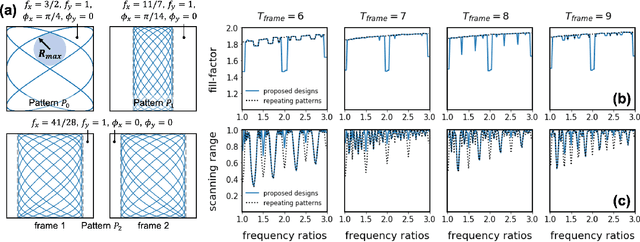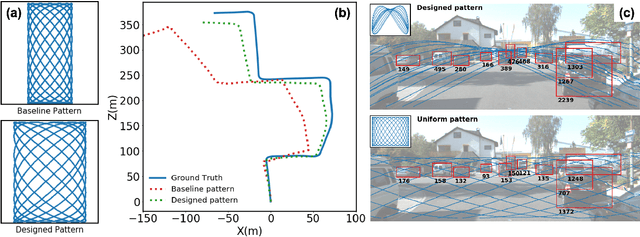Resonant Scanning Design and Control for Fast Spatial Sampling
Paper and Code
Mar 24, 2021



Two-dimensional, resonant scanners have been utilized in a large variety of imaging modules due to their compact form, low power consumption, large angular range, and high speed. However, resonant scanners have problems with non-optimal and inflexible scanning patterns and inherent phase uncertainty, which limit practical applications. Here we propose methods for optimized design and control of the scanning trajectory of two-dimensional resonant scanners under various physical constraints, including high frame-rate and limited actuation amplitude. First, we propose an analytical design rule for uniform spatial sampling. We demonstrate theoretically and experimentally that by including non-repeating scanning patterns, the proposed designs outperform previous designs in terms of scanning range and fill factor. Second, we show that we can create flexible scanning patterns that allow focusing on user-defined Regions-of-Interest (RoI) by modulation of the scanning parameters. The scanning parameters are found by an optimization algorithm. In simulations, we demonstrate the benefits of these designs with standard metrics and higher-level computer vision tasks (LiDAR odometry and 3D object detection). Finally, we experimentally implement and verify both unmodulated and modulated scanning modes using a two-dimensional, resonant MEMS scanner. Central to the implementations is high bandwidth monitoring of the phase of the angular scans in both dimensions. This task is carried out with a position-sensitive photodetector combined with high-bandwidth electronics, enabling fast spatial sampling at ~ 100Hz frame-rate.
 Add to Chrome
Add to Chrome Add to Firefox
Add to Firefox Add to Edge
Add to Edge